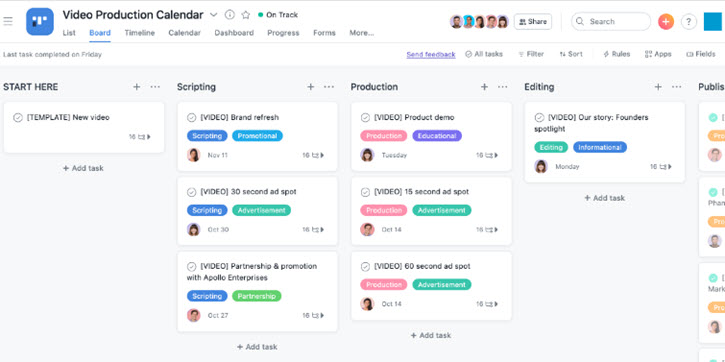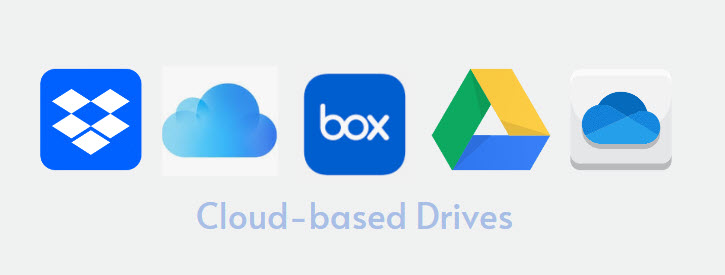Summary: Behind every successful video making, there is the unsung hero of effective project management for video production. If you want to be powerful and efficient in budget control, resource allocation, and have a firm grasp of the project's progress while ensuring all stakeholders are well-informed, here are 10 tips to manage your video production project.

Brands are increasingly turning to video to engage with their customers.
According to 2022 Wyzowl's State of Video Marketing, video is currently used as a marketing strategy by 85% of organizations.
However, video production is not an easy task.
From pre-production such as writing and filming to post-production such as editing, VFX, color correction and sound design, various parties and departments are involved. It entails intensive communication, teamwork, and cross-department cooperation – not only among the production teams, but also with third-party clients.
As a filmmaker, you might neglect the administrative requirements in favor of concentrating on the technical parts of your profession. To transition from a novice to a professional, knowledge of project management for video production is a crucial organizational ability in the filmmaking industry.
10 Tips Toward Better Project Management for Video Production
Understanding project management for video production might mean the difference between a smooth, on-time video production workflow and a chaotic, poorly executed video marketing approach.
It essentially entails determining what must be done, in what order, and when. To establish accountability for completing each assignment, you must assign it to a specific individual.
Check out these tips for an overview of everything you need to know about video production project management.
1. Validate Requests from Clients
You can't begin the video project planning process unless you know your client's requirements. It's too easy for an organization to send you a shoddy message, which will only lead to confusion, aggravation, and a significant amount of wasted time.
If you wish to do things correctly, send a form to your client or keep one on your webpage for cold requests. Modify your form with timeframes, intended audience, design concepts, general goals, and other fields vital to you. When you grant your video projects the go-light, the best platforms for project management in 2023 will even complete your task management instantly, saving you time.
2. Create a Video Production Strategy
As it highlights your objectives, techniques, and performance measures, having a well-specified video production approach is critical for directing your video production goals. Begin by identifying the following elements to build a solid strategy:
- Create a complete budget plan
- Identify your target audience
- Outline your objectives
- Determine key performance indicators (KPI)
- Assign person accountable for specific tasks
- Decide on your marketing strategy
- Choose the best video formats according to the intended platform
3. Make a Comprehensive Checklist
One of the essential project planning tips is creating a well-defined checklist. Nothing is worse than releasing a video and realizing you forgot to include your business logo in the corner. When creating branded movies, you must standardize everything, including color palettes, intros, frame rates in every phase, subtitle type, and so on.
Incorporate a job into your process that addresses all of your "must-haves." Because your checklist is alive, if your client's brand evolves or you notice additional issues, update your checklist and minimize your simple mistakes to zero.
4. Map Out a Schedule
When you get deadlines from your clients, you may begin to develop a schedule by working backward from there. It is critical to plan out what has to be done and when.

Picture Credit: Video Production Calendar in Asana
If you make many videos, developing a consistent routine that you understand works for you can be beneficial. You should also allow client comments and adjustments in between different stages in video production.
If you're working on numerous videos at once, it is beneficial to visualize your timetable, so you know what's coming up.
5. Document the Complete Process Using Project Management Solutions
According to Research and Markets study, the video management software market is estimated to develop at a compound annual growth rate of 23.1%, from over USD 10.9 billion in 2023 to USD 31 billion by 2027.
With the help of video production project management software, you can keep track of all your projects in one location, assigning each one a responsible party and an expected completion time. Using time monitoring tools, you can assess how effectively you've calculated your timeframes.
Using a Gantt chart, you may see your process in its entirety. These helpful visualizations let you see how your tasks fit together — as you move closer to your deadlines — by breaking them into time-based pieces.
Kanban board is another excellent project organization tool. A moving card represents each task. As a constant reminder, you can see your goals and KPIs, along with a backlog of all the jobs that haven't started yet.
6. Save Drafts in a Drive
If you've worked with video project management before, you'll know that the back-and-forth of connections to external file hosting services is always optimal. Rather than distributing the video to your stakeholders, invite them to come to you.

You can maintain every version of your film in one place and pin a link to one file with a sophisticated cloud-based drive, rather than expecting everyone to have the bandwidth to download a new file and keep track of how many revisions there have been. Additionally, you can limit who has access to your files to protect your ongoing work from prying eyes.
7. Maintain Centralized Communication
Despite the availability of various alternatives, email communication still dominates the business world. However, using email when collaborating on video production projects, like movies, may be incredibly unpleasant. If a person is away without notice and has crucial information and resources stashed away in their email, it may start to postpone projects unnecessarily.
Better practices? Communicate with each other about tasks using your video production project management software. Keep all revisions and updates logged within each assignment to save your team and clients the trouble of trawling through their inboxes. As everything is contained in one tidy timeline that is arranged chronologically from start to finish, miscommunication is eliminated.
According to a 2020 Communication poll, 47% of respondents think it's challenging to acquire a precise picture of where their projects stand. But, when they use a project management system, that number reduces to 29%.
8. Synchronize Your Feedback Procedure
Managing film crews and simplifying their lives by coordinating feedback delivery is a fantastic idea. There is nothing worse for an editor than having a discussion with a teammate here, getting an instant client message, and receiving an email from the director that opposes everything else.
Make sure everyone is on the same page by holding checkpoint meetings and avoiding appeasing one stakeholder at the expense of another. By reaching an agreement on the changes that must be made, your editor will be able to take feedback comments in a way that makes sense to them and create a second draft that is acceptable to all parties.
9. Run Analytics and Measure KPIs
A world-class video is useless if no one watches it, but this crucial part of project management for video production is frequently disregarded. You can use countless measures to gauge your movie's success, and tracking its performance is an essential component of distribution. You can only determine what works and what doesn't for your organization by running analytics on your KPIs.
10. Evaluate and Improve Your Method
Another crucial project management tip is assessing and enhancing your video production process. The best time to consider the future is towards the conclusion of your video production. Bring your team together and evaluate how you did after all those close calls, deadline anxiety, and communication issues.
Use solutions with a set of professional reporting and exporting capabilities. Check out Bridge24 reviews to learn how they may assist you in accessing, organizing, filtering, and exporting your data to visualize it and derive critical insights for your video project.
If you've been keeping track of task duration, you may observe which ones dragged on excessively and modify your templates accordingly. Even if you're at the top of your game, looking back in retrospect demonstrates a desire to improve the production pipeline, which in return expresses your aspiration to be a dedicated team. Sure, it increases the likelihood of getting hired again by your previous clients.
Wrap-Up

The entire process of planning and producing a video, from pre-production to post-production, is complex and communication-intensive.It requires a large team to work with complicated files and versions.
Although your video team may already be using tried-and-true video editing software and markup tools, applying the above tips on project management for video production can assist in gathering feedback more quickly and precisely, enabling you to produce the final cut faster while reducing confusion for the production team, editors, clients, and reviewers.







